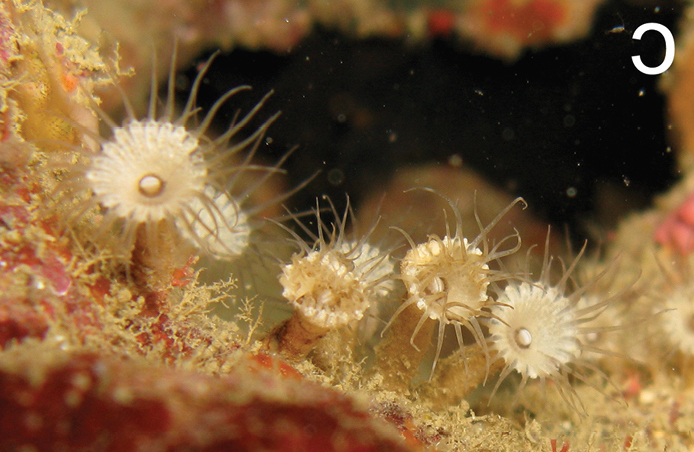Two new species of zoanthids, Palythoa mizigama & Palythoa umbrosa were described earlier this year but we’re just now getting a good look at the appearance of these novel zoanthids. What makes the two new Palythoa species really interesting is not just that they are nonphotosynthetic, but that they are azoox species of a genus that is best known for photosynthetic species.
Nonphotosynthetic or Azooxanthellate (Azoox) zoanthids have been known about for decades with species from Abyssoanthus and Neozoanthus only being known from extreme depths where virtually out of the reach of sunlight. These zoanthids literally never see the light of day, as is the case for many species of deepwater corals.

The new azoox Palythoa species were discovered growing in the Ryukyu Islands of southern Japan. Despite being azooxanthellate, P. mizigama and P. umbrosum were collected in the relatively shallow depth of 2 to 12 meters (6 to 40 feet) where light is still plenty available for photosynthesis. In this well-lit environment the two new Palythoas were found living in shaded areas, in walls or caves where light availability is quite reduced.
Thanks to some pictures of some in-situ living specimens of Palythoa mizigama we can see that these polyps are not so different from the beautiful polyps and crazy colored zoanthids that collectors clamor for. The first thing reefers should think about with the description of azooxanthellate species of Palythoa is the importance of feeding your zoanthids.

It is well known that zoanthids are easy to keep if they are provided with a moderate degree of light, medium flow and a stable environment. However we also know that zoanthids thrive especially well in tanks with higher nutrient aquarium water.
The discovery of two new species of Palythoa that subsist only on a heterotrophic lifestyle should prompt zoanthid keepers to really take extra special care to feed their most prized zoanthids. Sure your palys and zoanthus polyps will probably live just fine on good quality light and dissolved organic matter but you’ll have to feed them variety of foods to get the best growth, look and color from this popular group of reef animals. [Zookeys]




